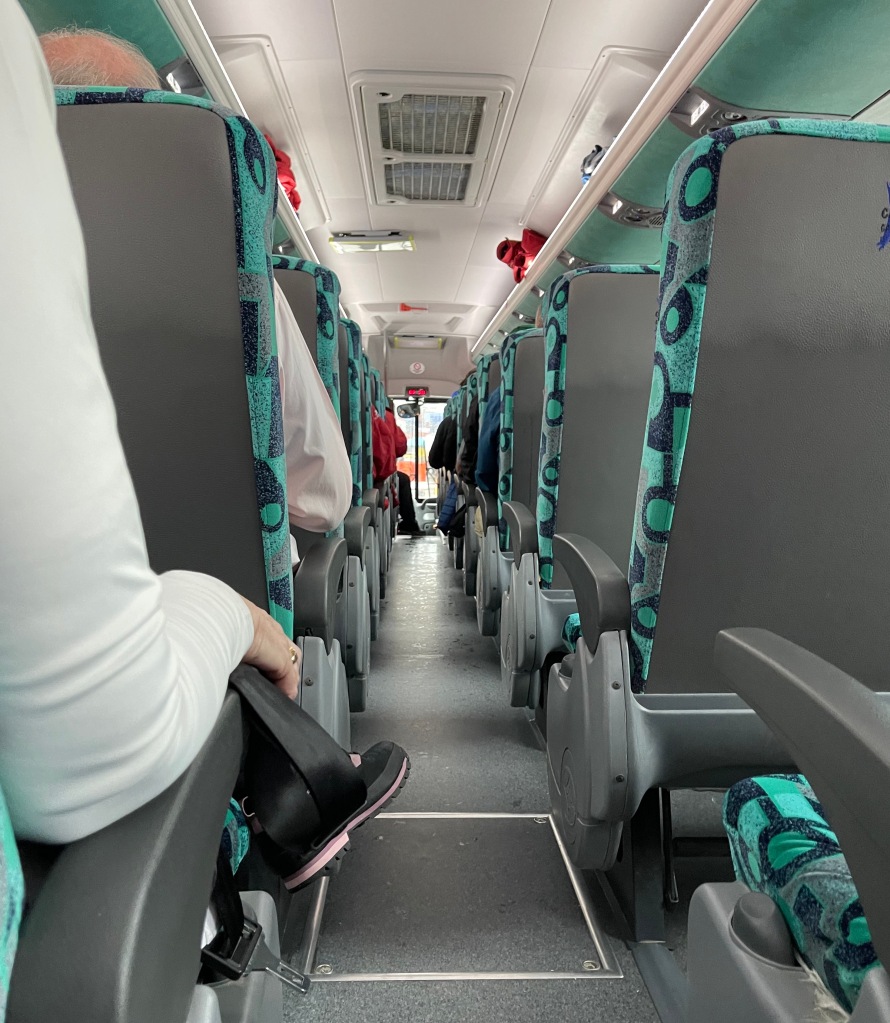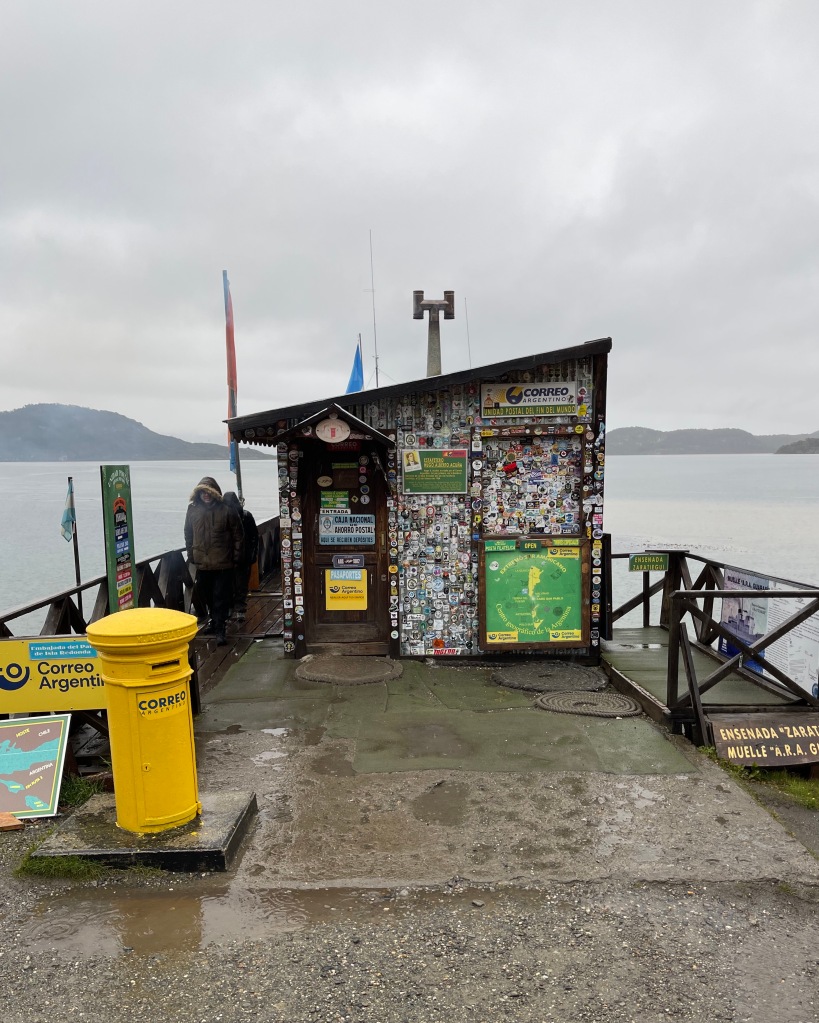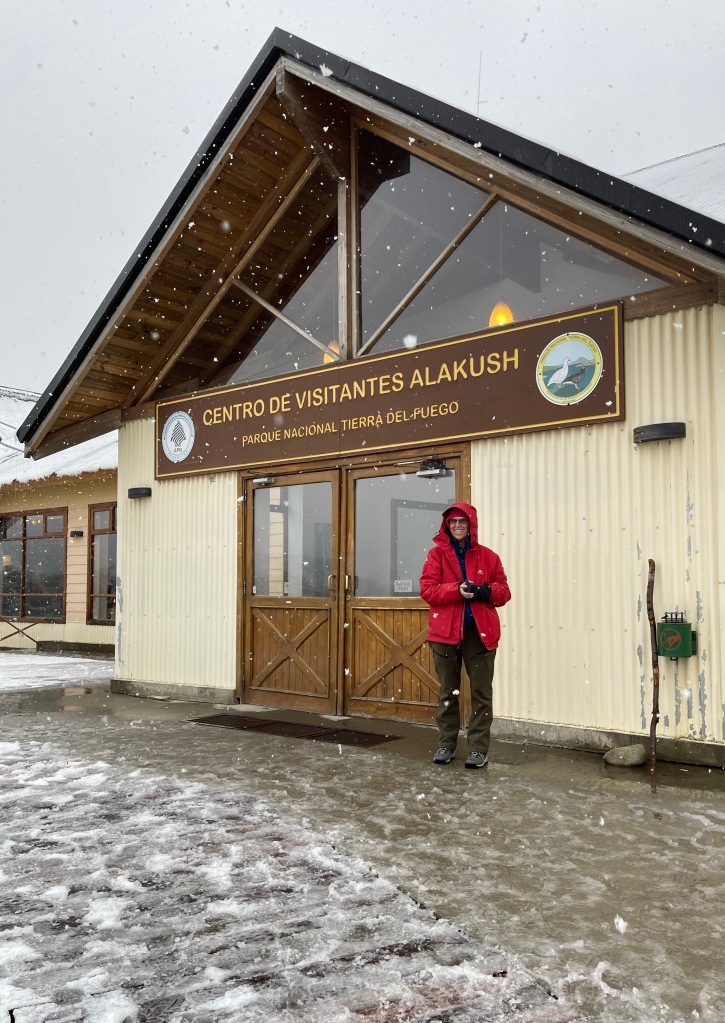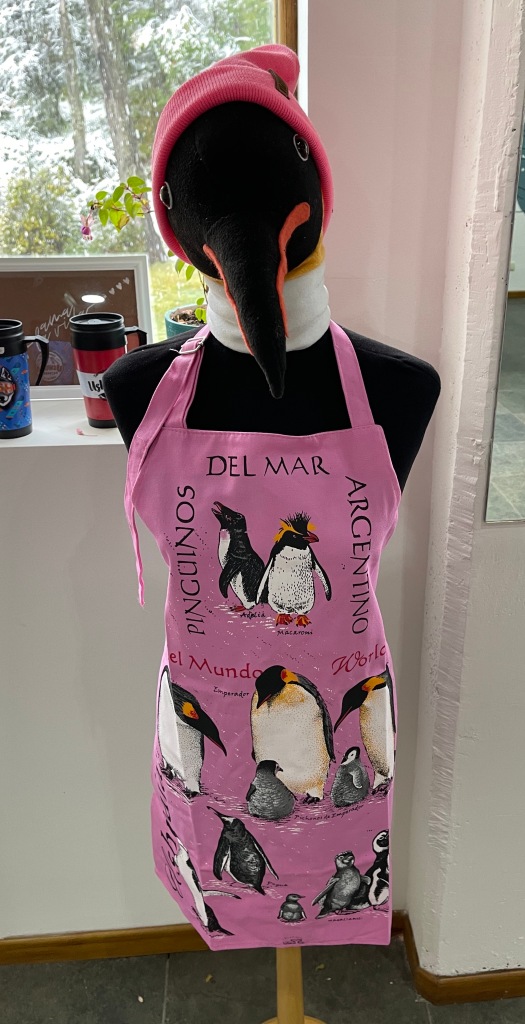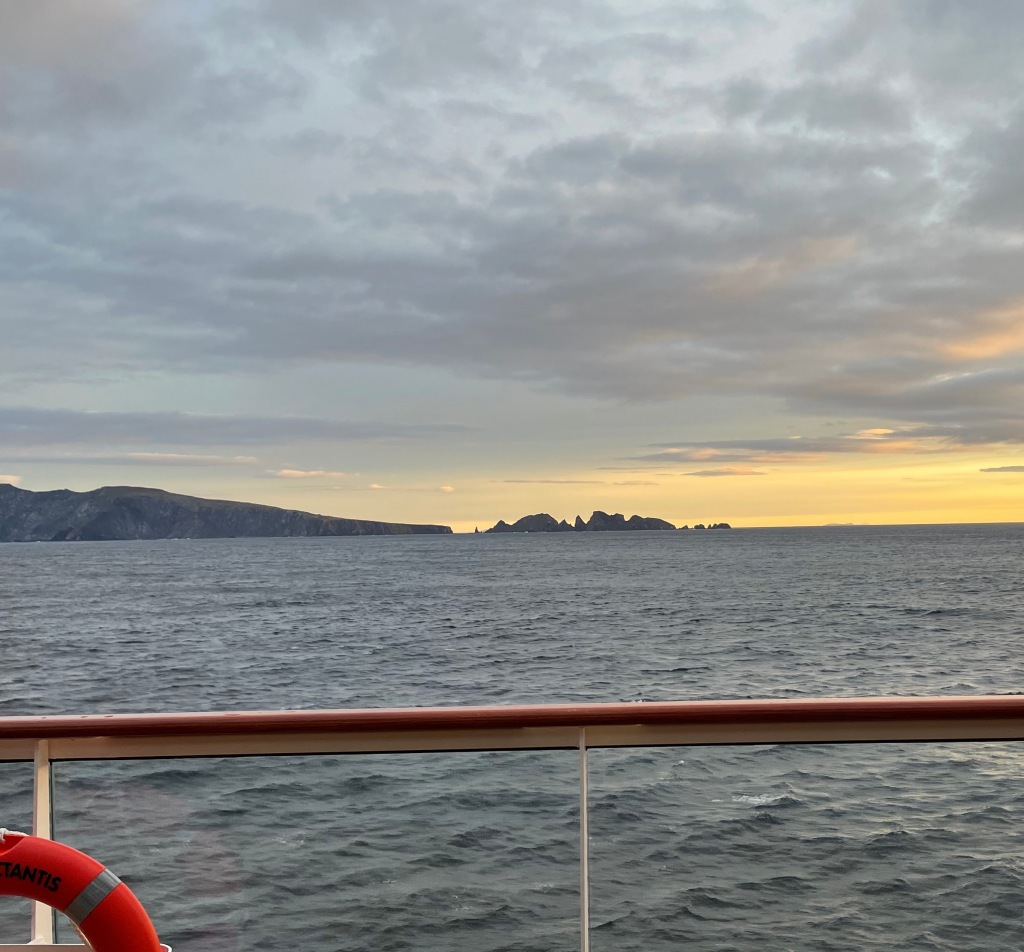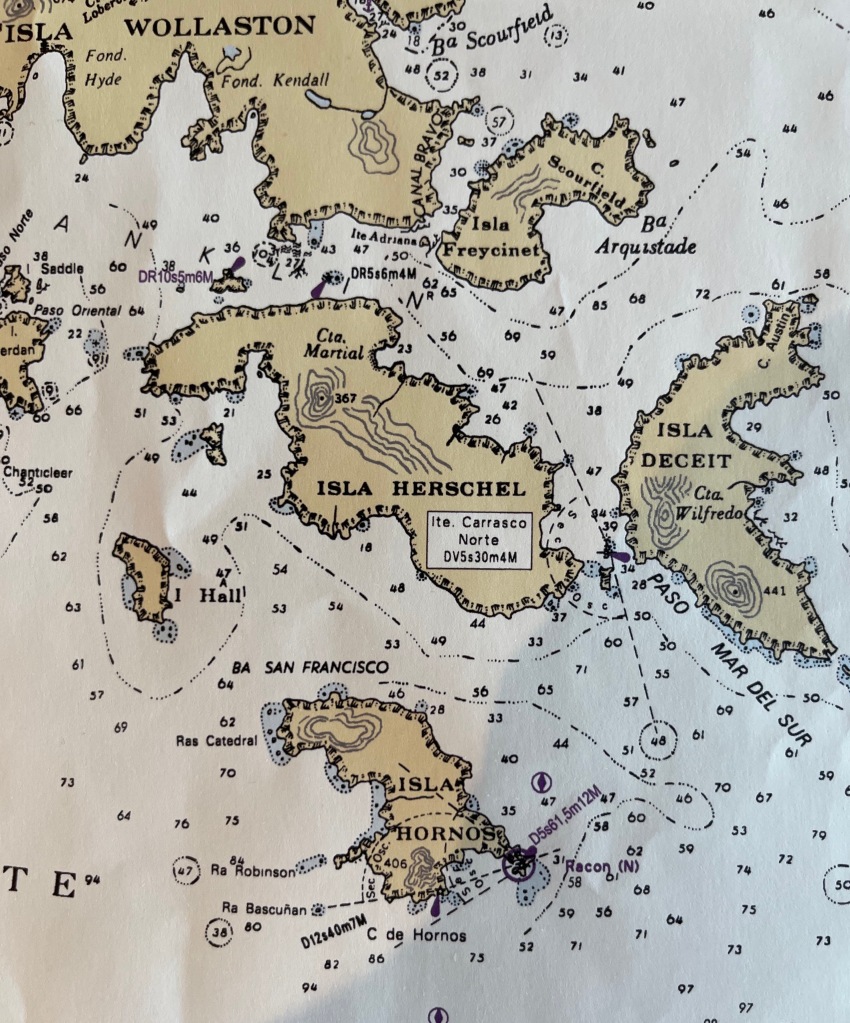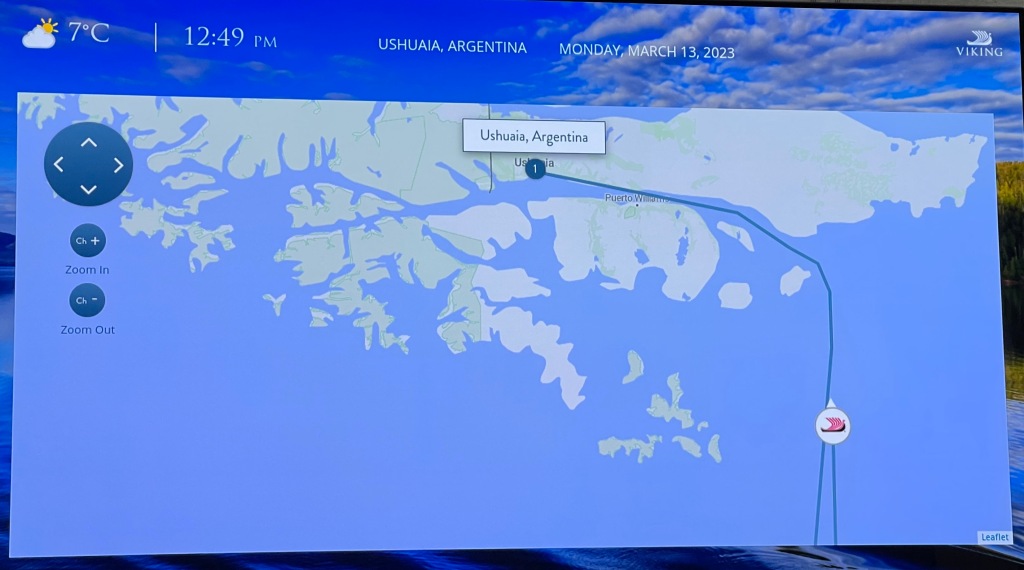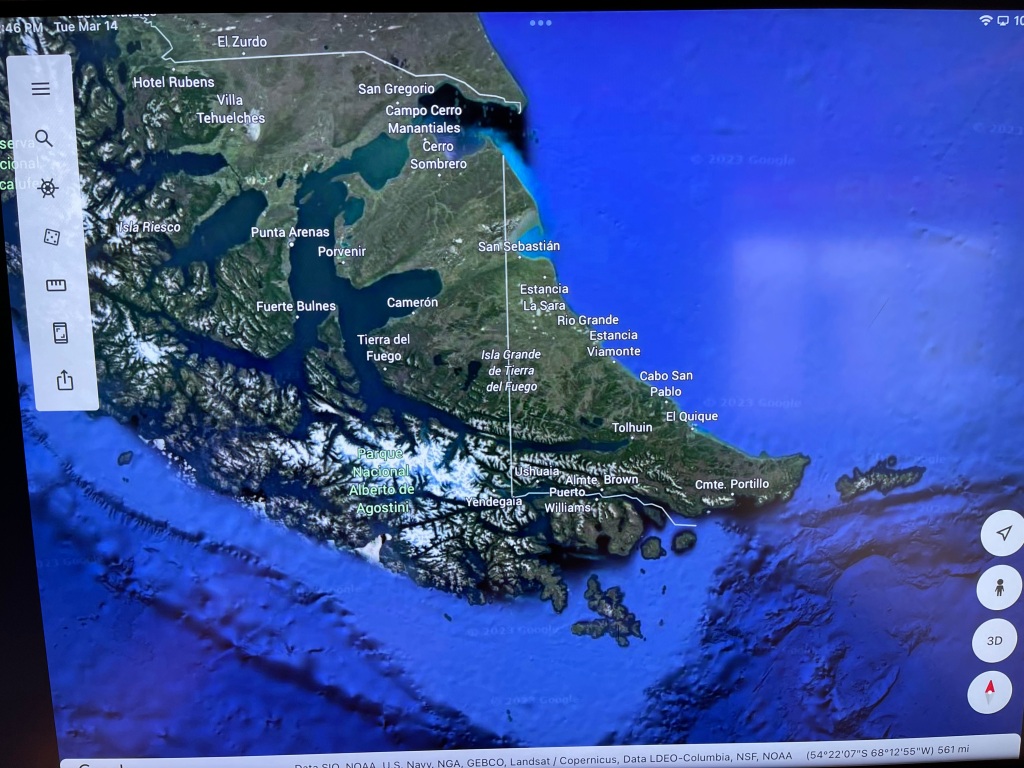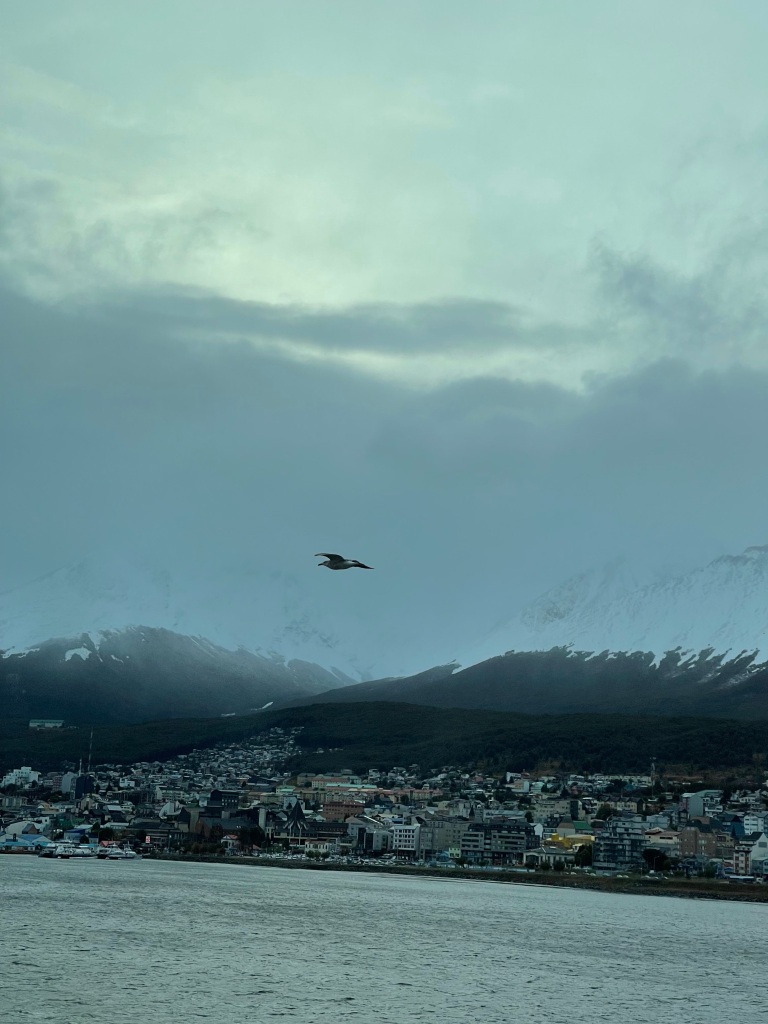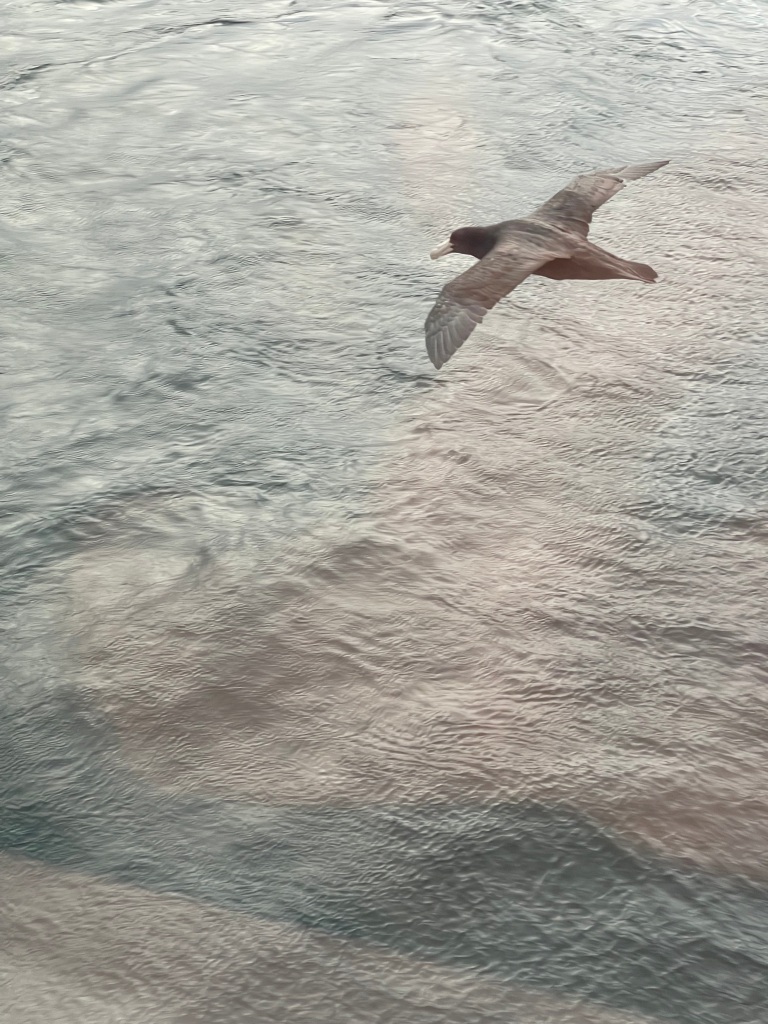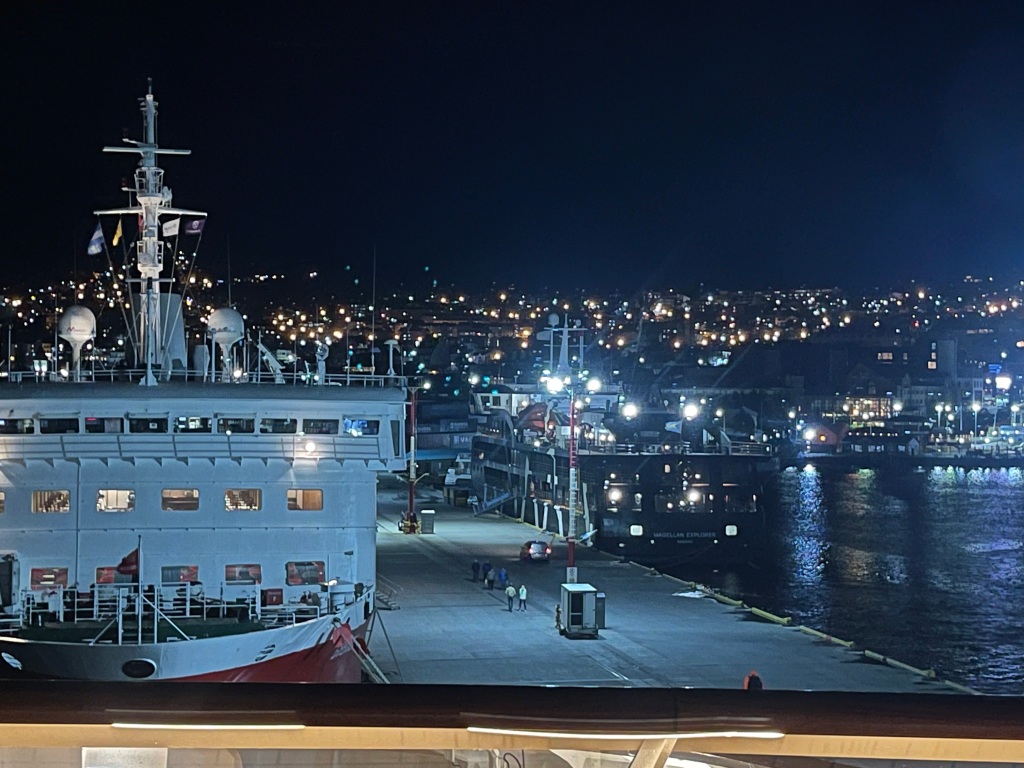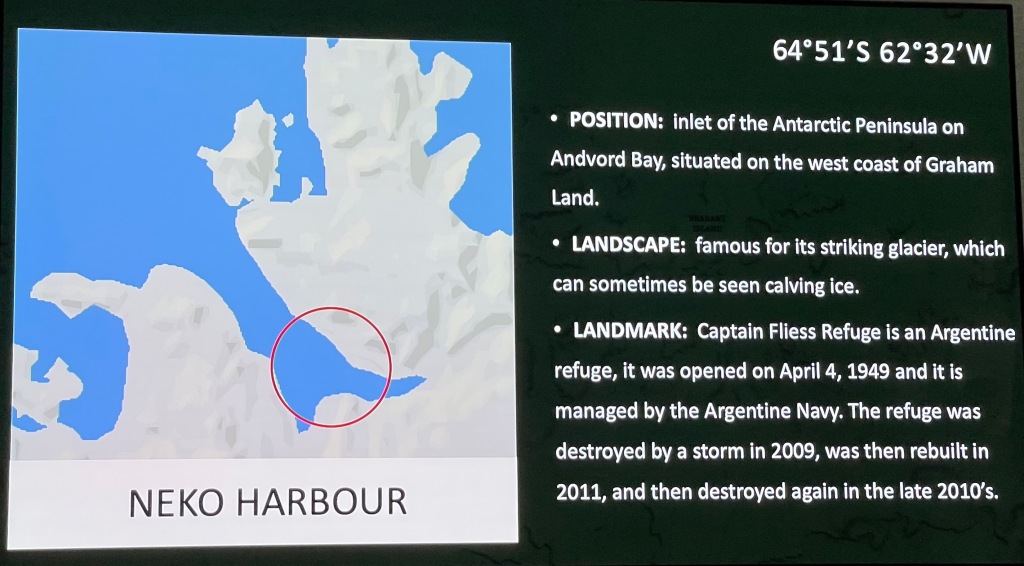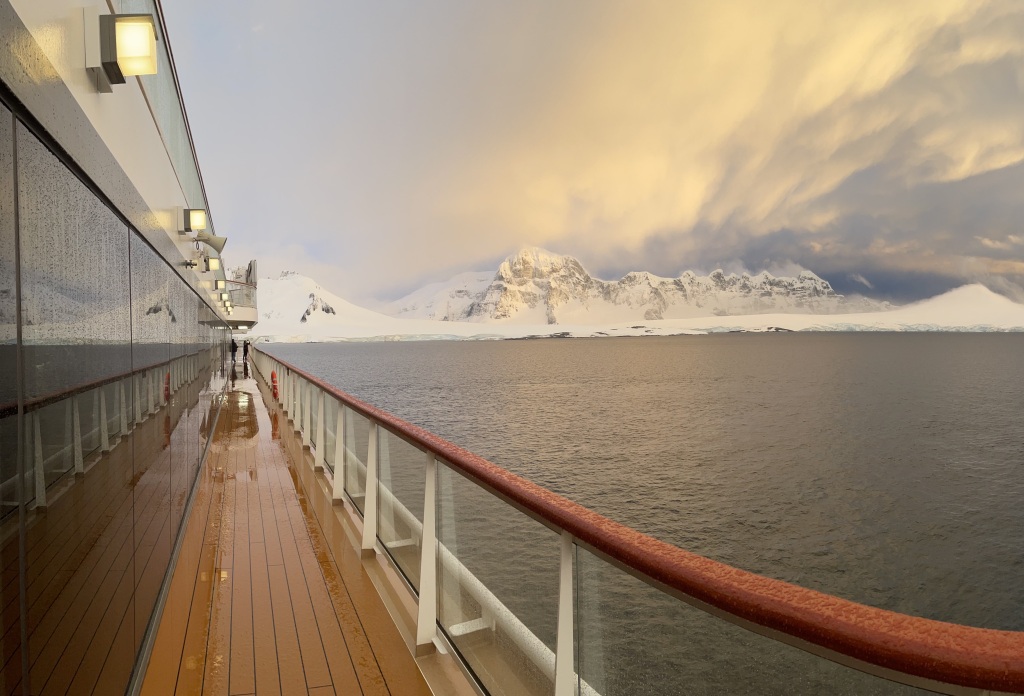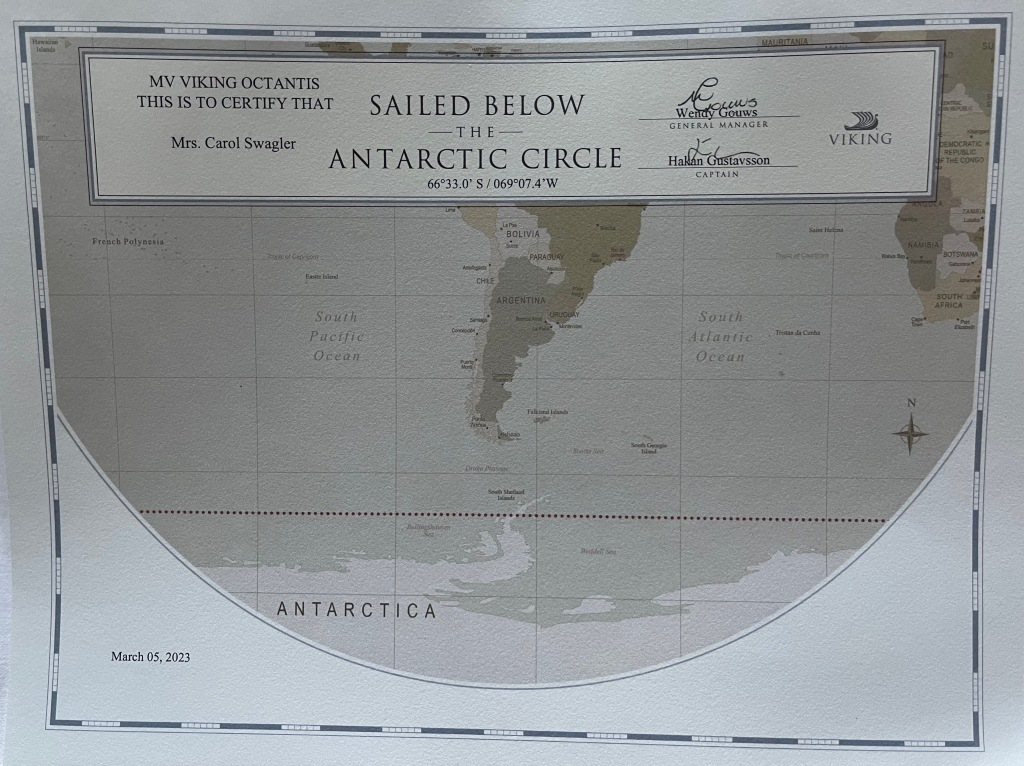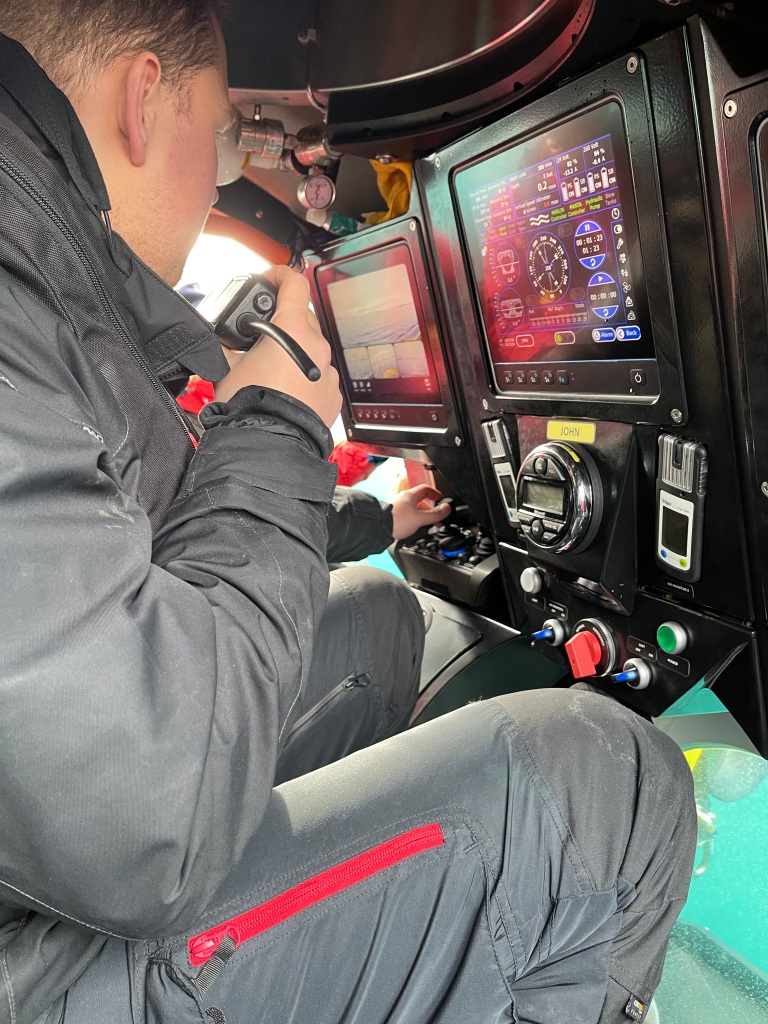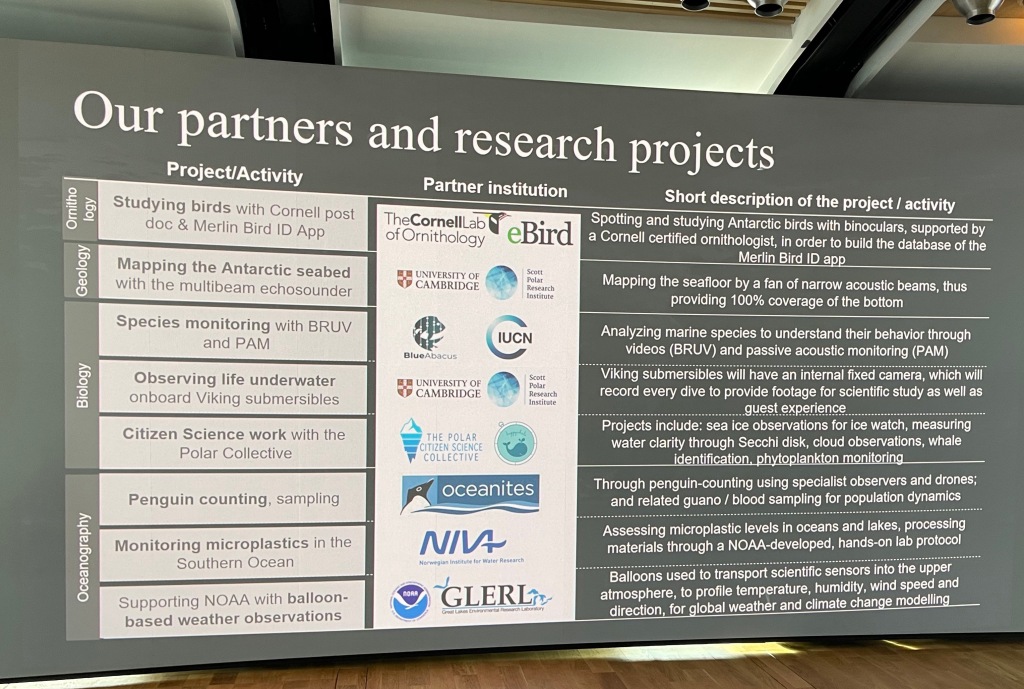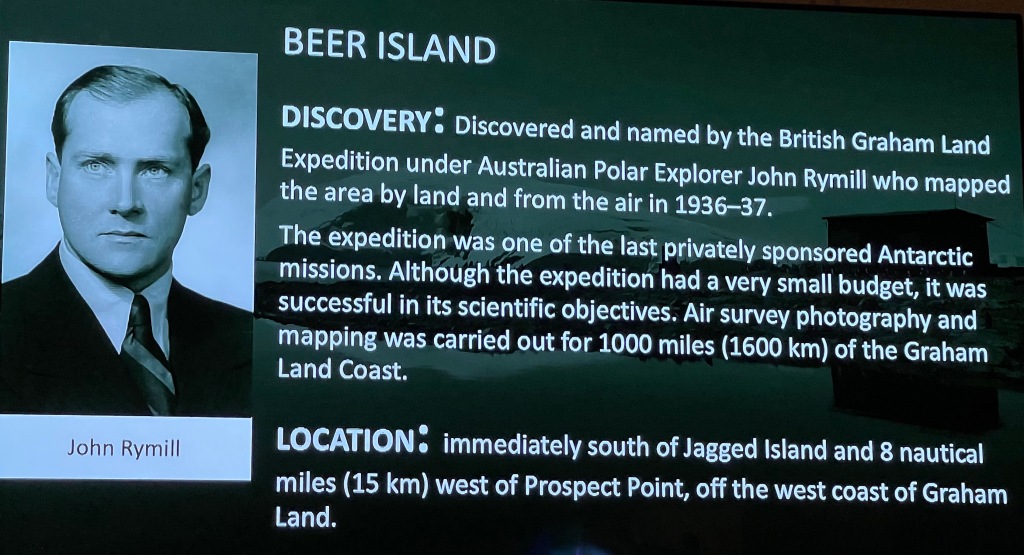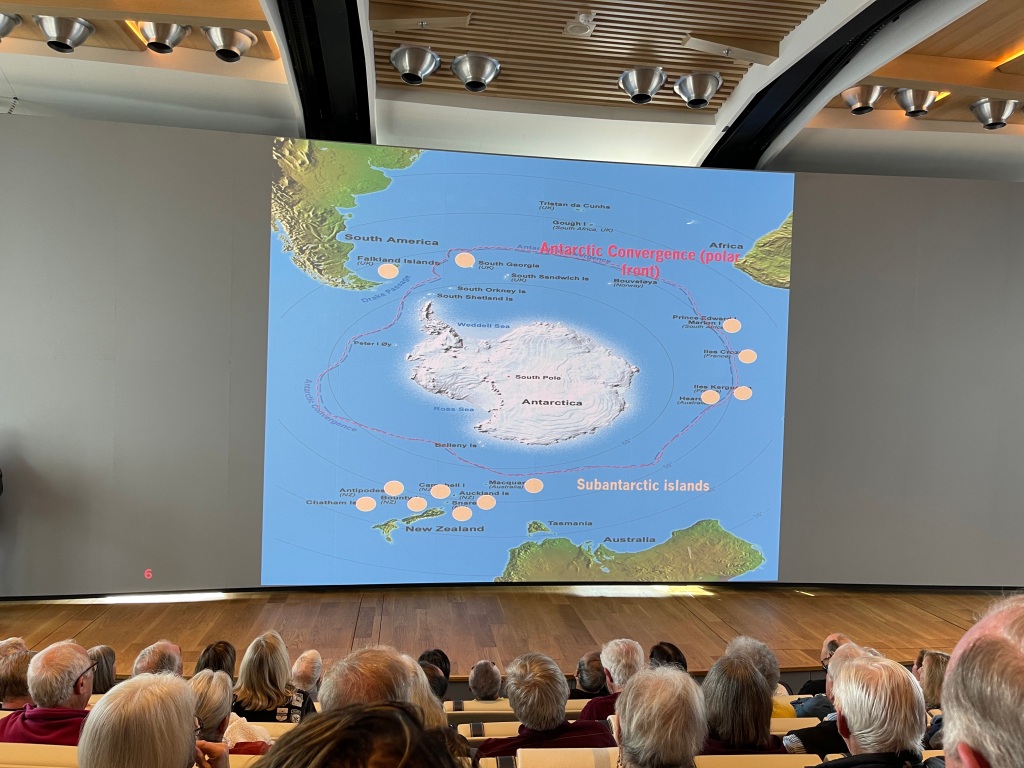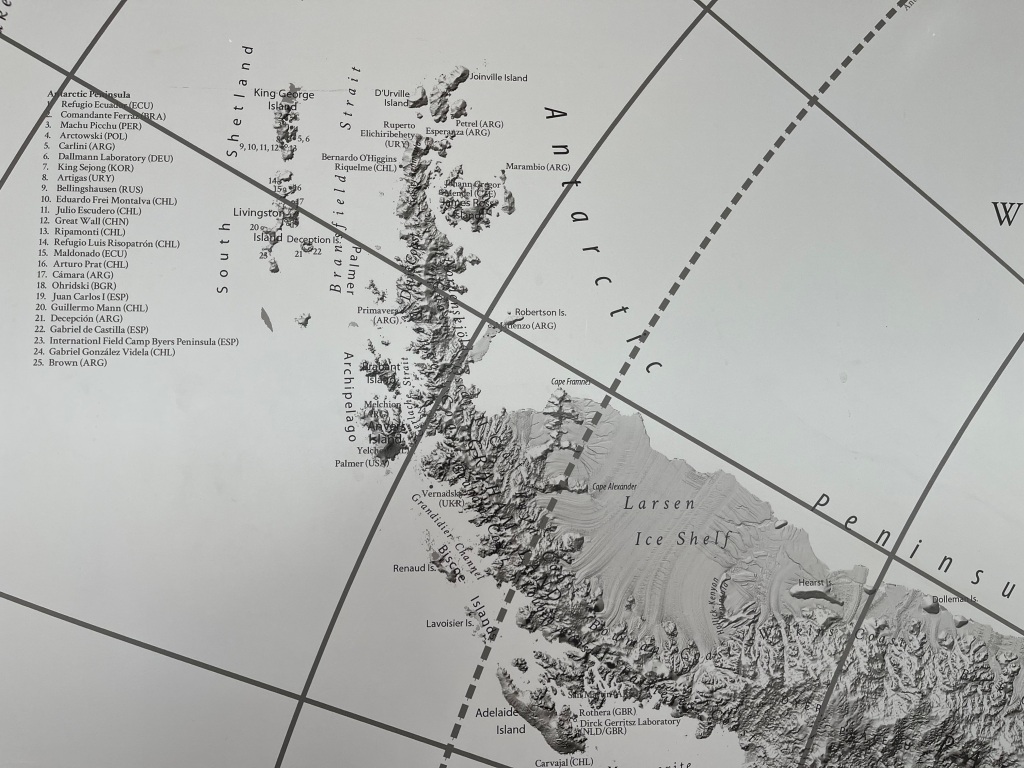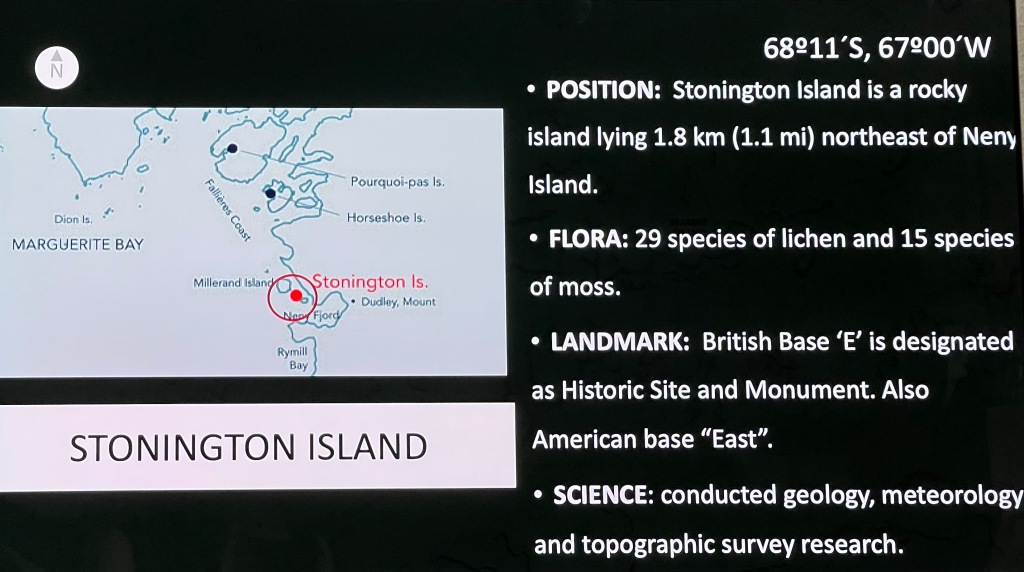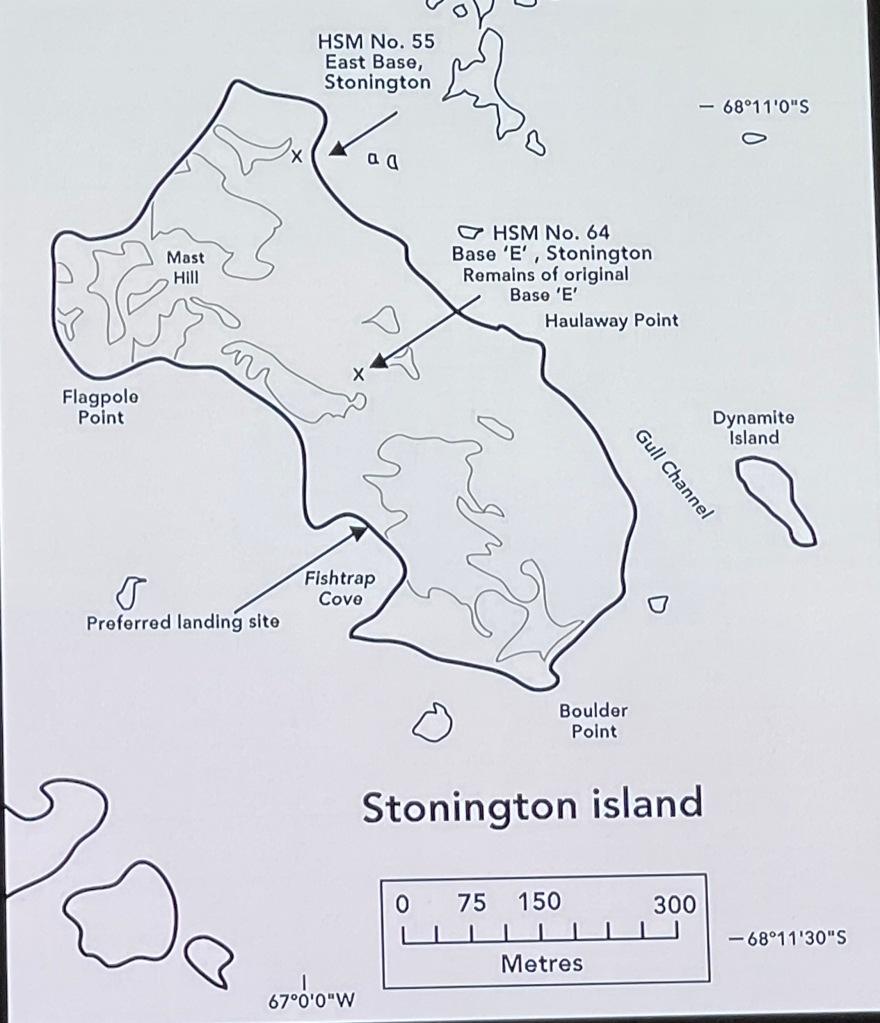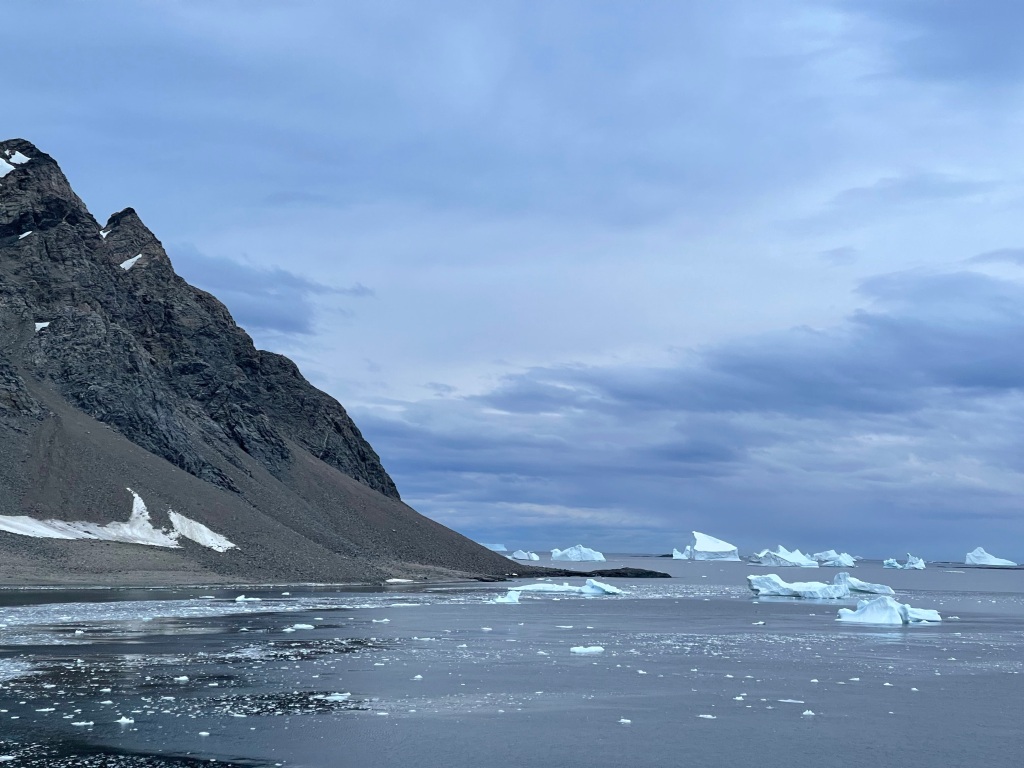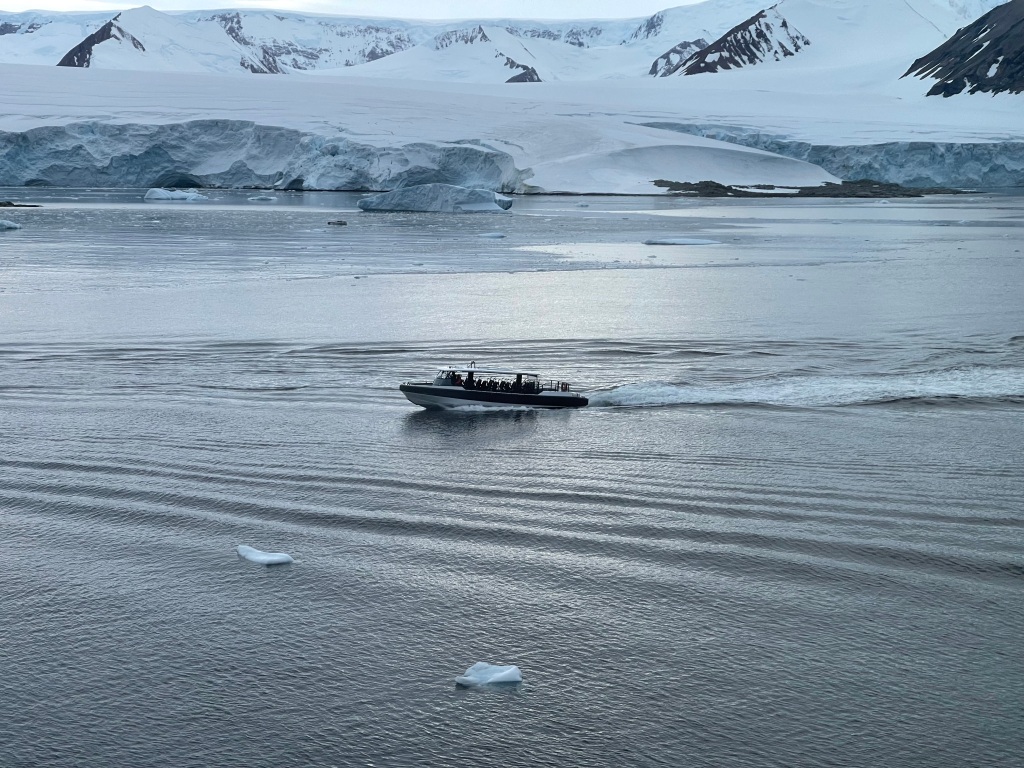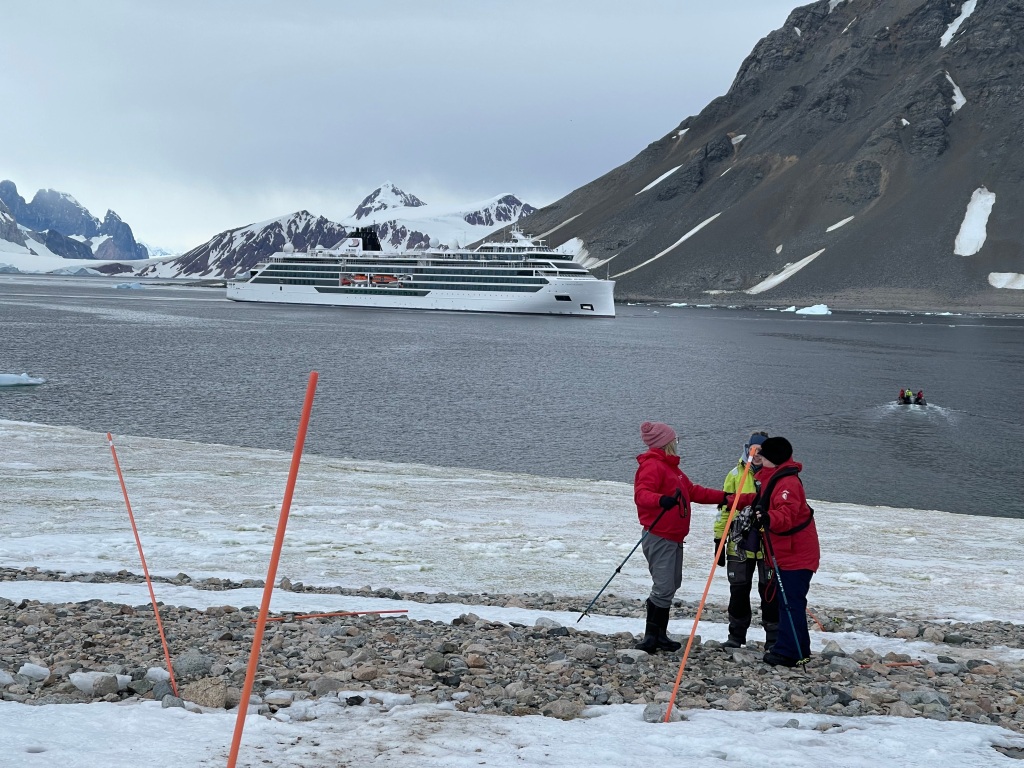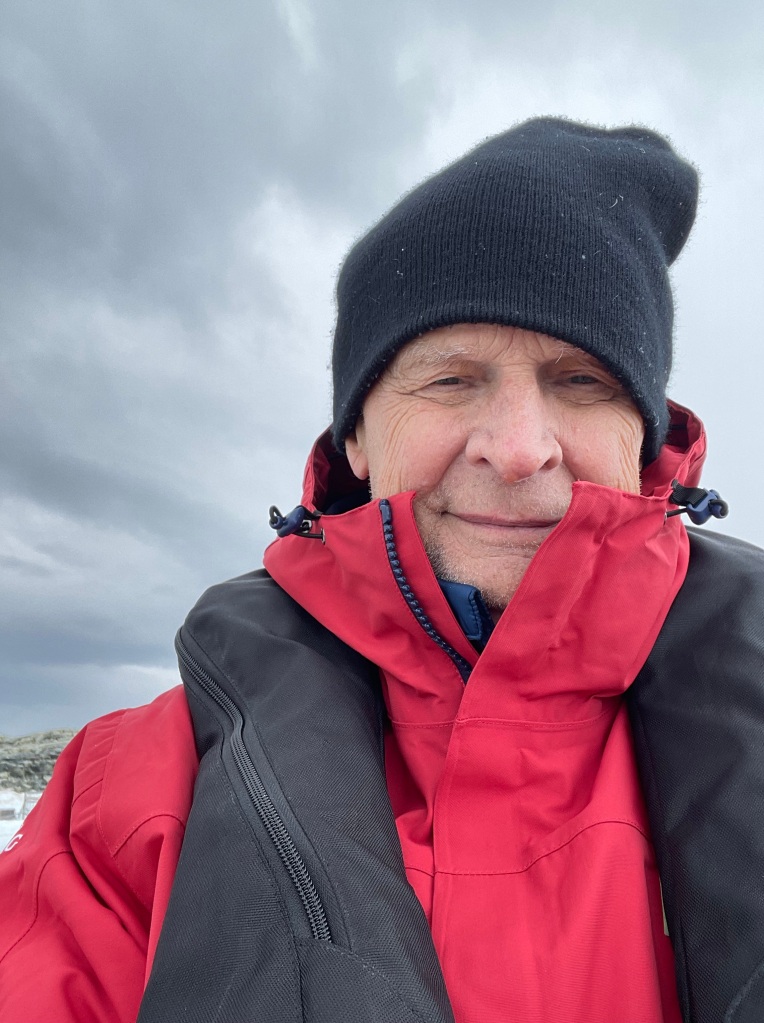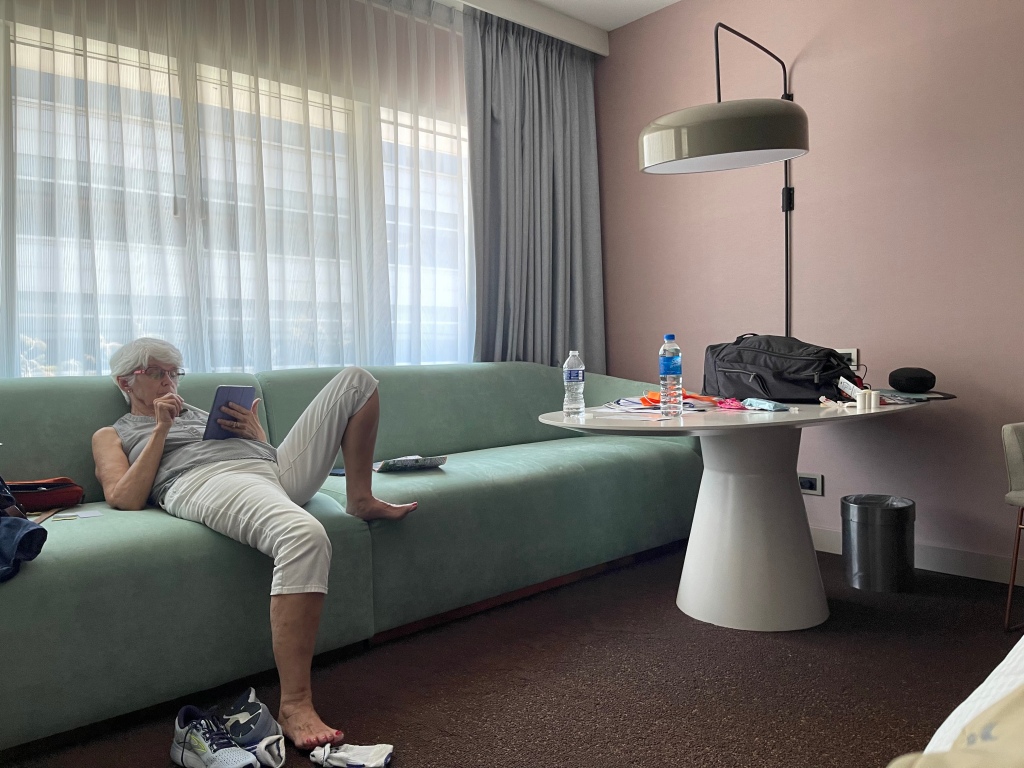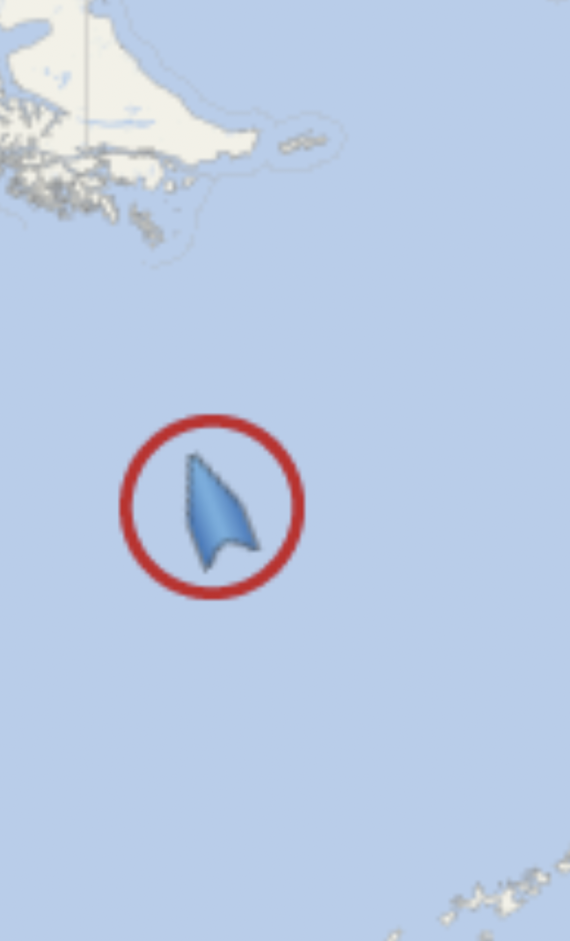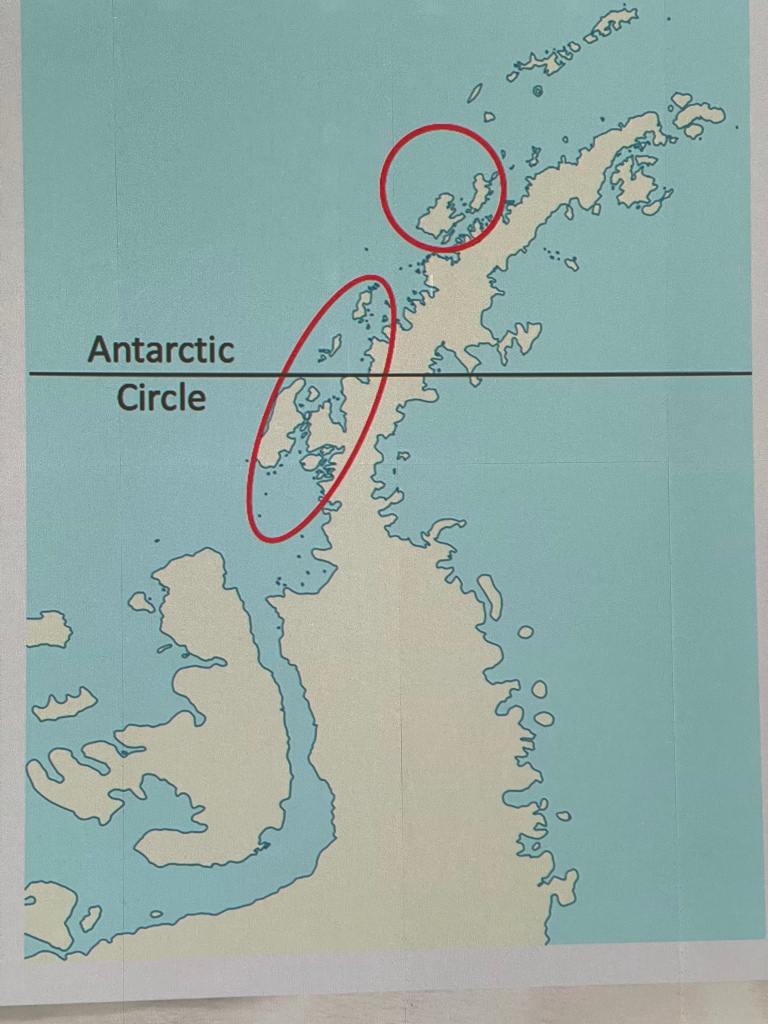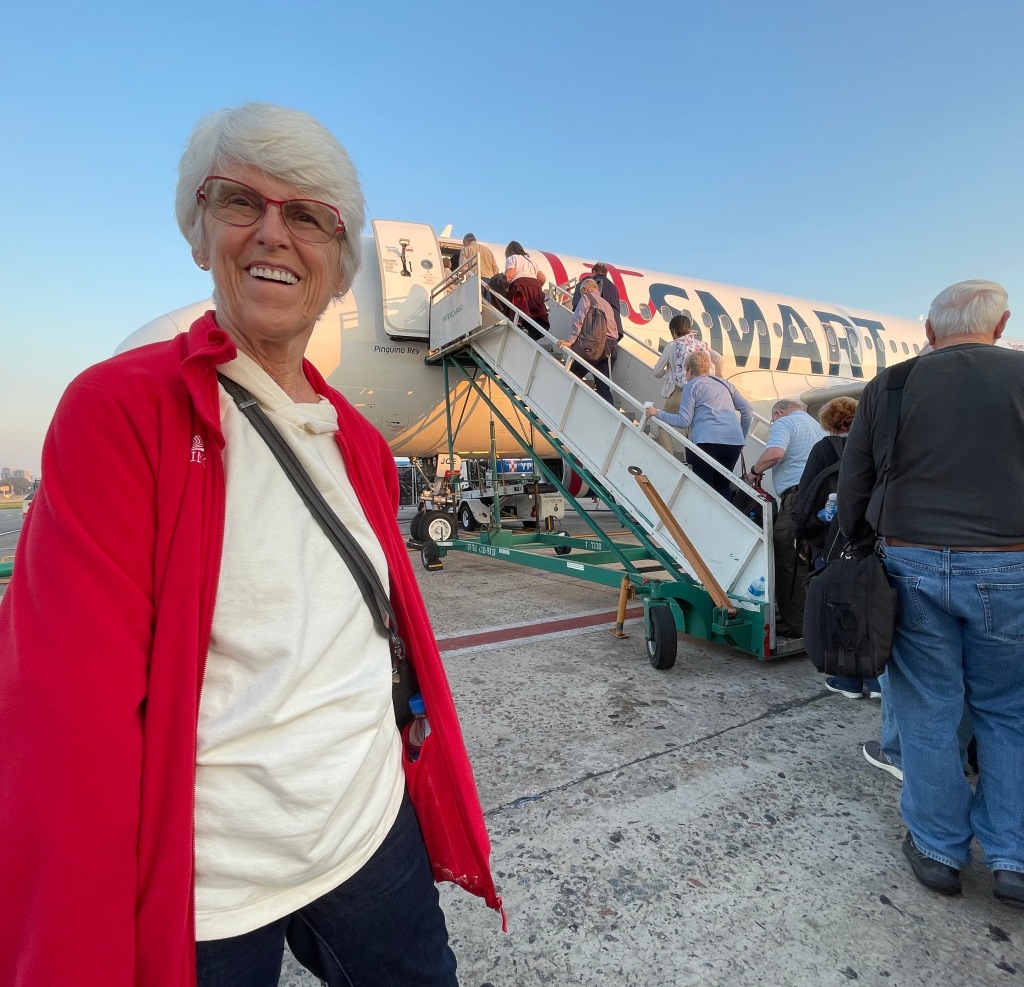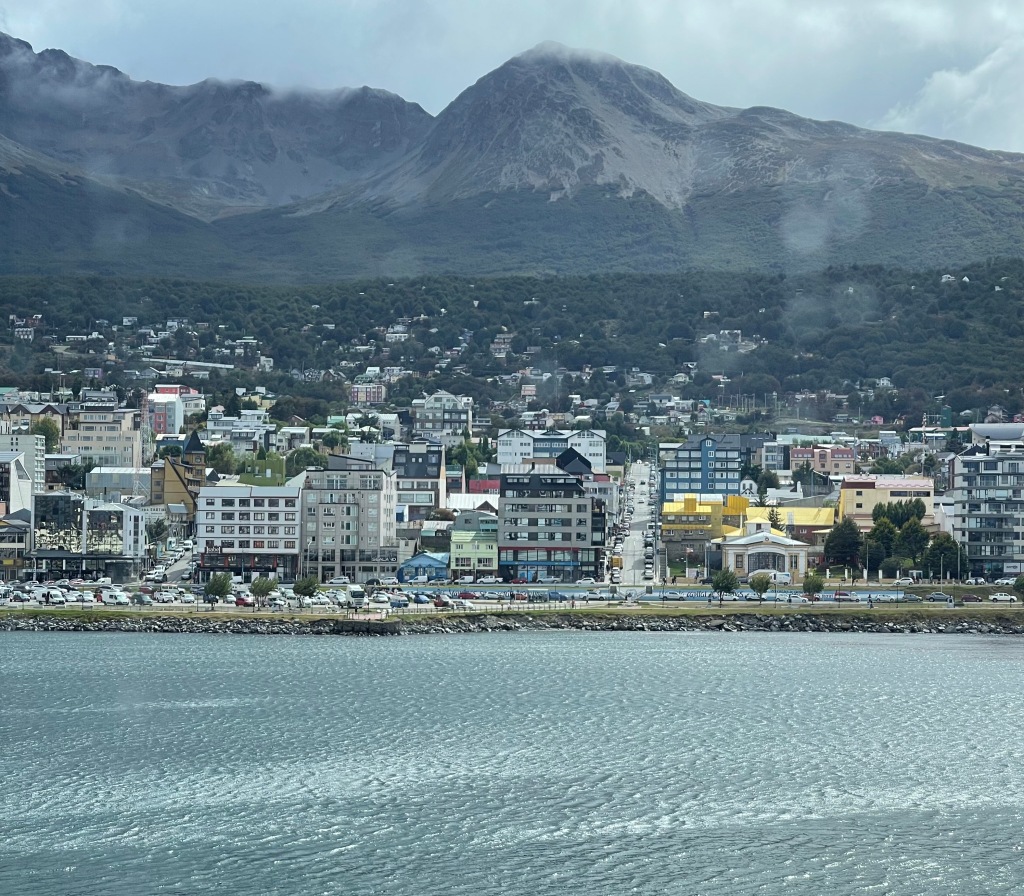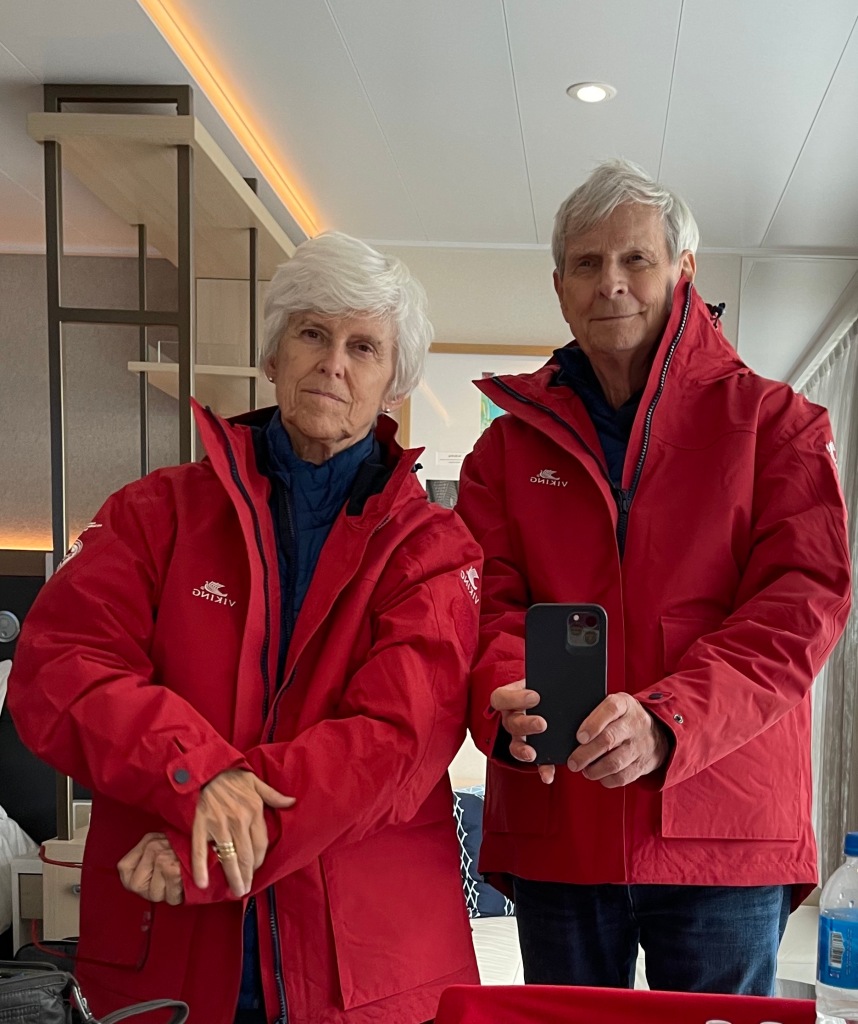
This is the map of the second segment on our trip.
Viking sold the “Translongitudinal” from Antartica to Milwaukee in six segments. Forget that when we booked in June 2022 we were told that all 378 passengers would be making the entire trip together. No sweat — they couldn’t sell more than 30 full passages, which was great for us — they treated the 30 of us magnificently.
The map above is the map of the second segment that began in Ushuaia on March 14 and ended in Valparaiso on March 27. Those joining the ship on this segment flew down from Buenos Aires on the morning of March 14, just as we did on March 3.
The Turnaround day on March 14 followed the usual pattern. Departing passengers left the ship early and were flown to Buenos Aires while new passengers joining the ship flew down to Ushuaia. Once all new passengers were on board and sorted out, and once the Worlders like us were back on board, the ship sailed in the early evening.
There were a couple of exceptions to this procedure.
In Fort Lauderdale huge rains (16 inches) closed the airport and almost a third of the new passengers did not arrive in Fort Lauderdale. Meanwhile all of the departing guests were trapped in Fort Lauderdale because their outgoing flights were canceled. Eventually the Octantis sailed at 11 pm that night with 56 new passengers still not on board. All but four of them caught up with the ship at our next stop in Charleston, South Carolina. The remaining four boarded in Norfolk, Virginia.
The Fort Lauderdale passengers were star-crossed. Scheduled in leave the ship in Toronto at the end of the Fort Lauderdale segment, most of their travel plans were again upended when the St. Lawrence Seaway closed for five hours due to fog. The Octantis arrived in Toronto hours late, long after most of the flights for the departing guests were gone for the day. It was a shambles.
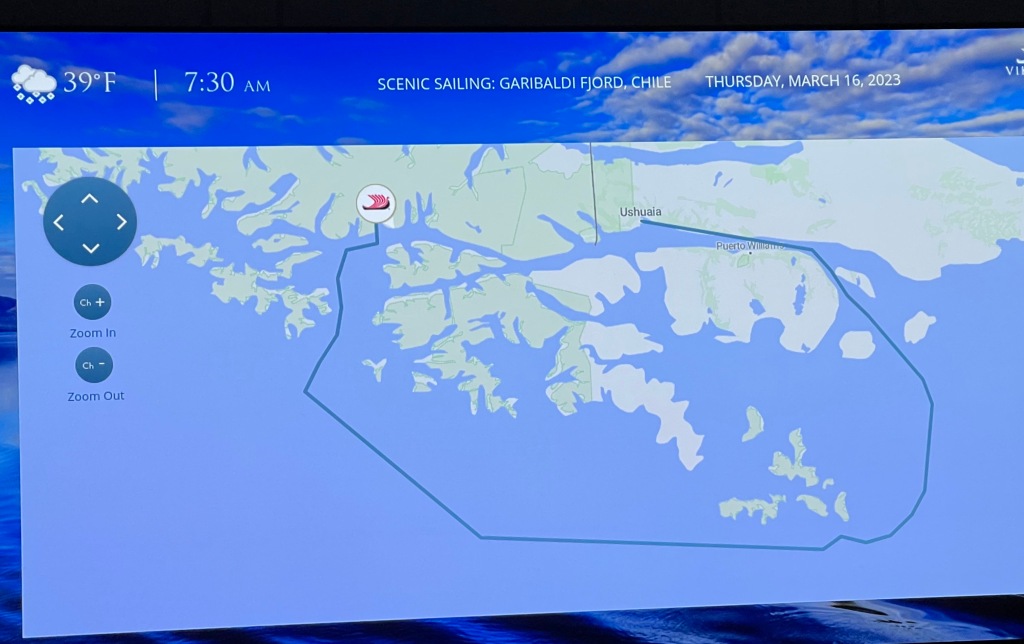
The map of our route from Ushuaia around Cape Horn and into the Chilean fjords and the Garibaldi fjord. We would spend several days in the Chilean fjords, followed by a day in Punta Arenas, before returning to the Chilean fjords.


Route into and out of Garibaldi fjord/glacier.
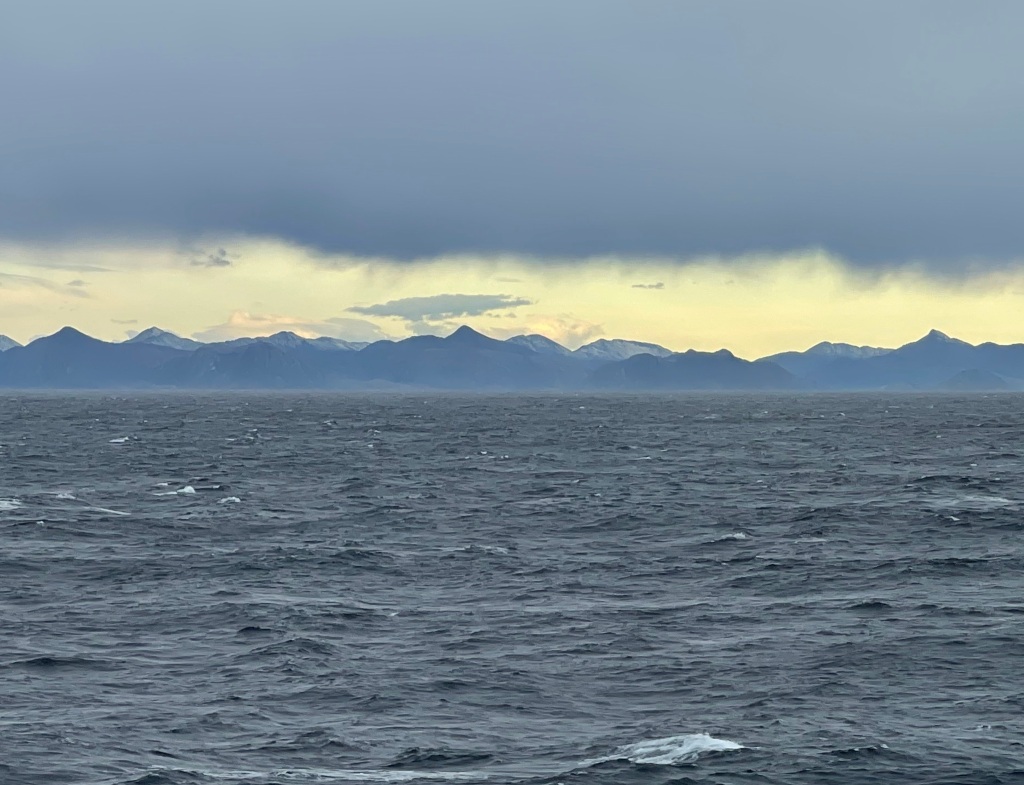
At sea off the tip of South America on our way to the fjords.

We spent a total of five days in the Chilean fjords.
This is one of my favorite places in the world and these are the most beautiful fjords I have visited. New Zealand and Norway fjords are gorgeous, but popular. Norway’s fjords had 6 or 8 ships running back and forth the days we were there. New Zealand was not quite as bad.
But here in Chile the grandeur and quiet of the fjords can be enjoyed devoid of any trappings of civilization. When the Panama Canal opened in 1914, there were economic reasons for commercial ships to no longer go around the tip of South America. The traffic of commercial ships on their way to somewhere else largely ended in South America and the nature here — Patagonia, the Chilean fjords and more — were left unspoiled.

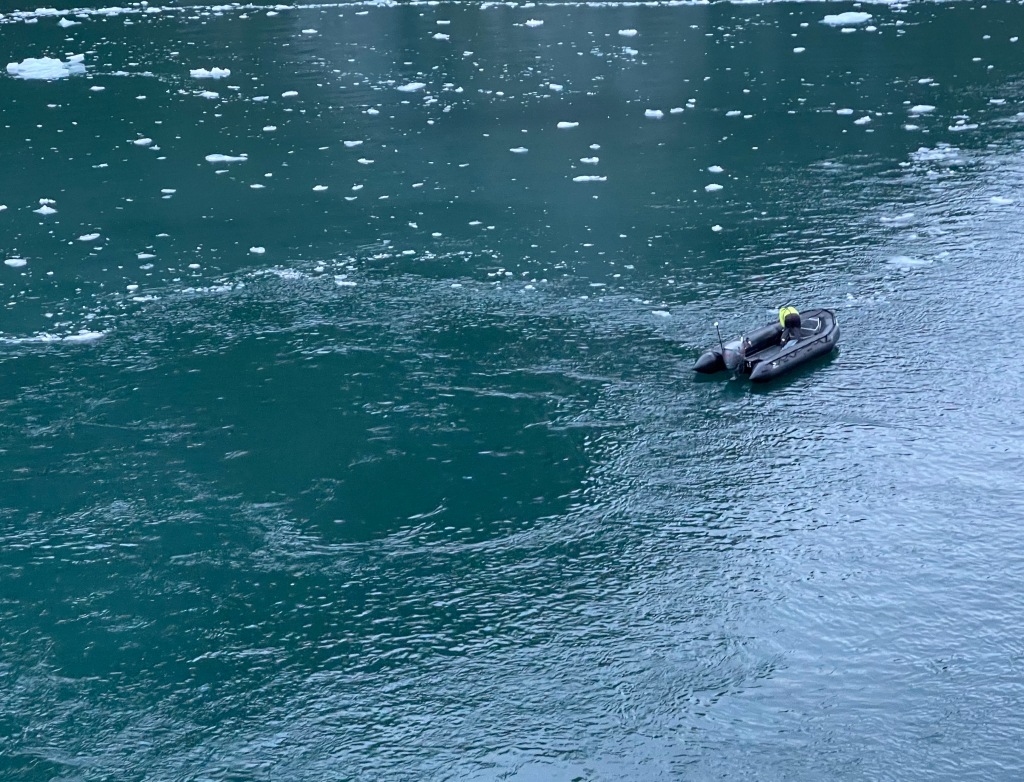
A zodiac from the Octantis threads its way through floating ice. Ninety percent of a chunk of ice is under the water. At one point a zodiac we were on was trying to return to the Octantis but blocked by a long line of ice. Bumping enough ice out of the way with the zodiac and looking for how to create pathways through the ice took time.
We had a similar situation on our Northwest Passage expedition off Canada when the weather turned and ice and shoals just under the water blocked our ability to get back to the ship which was running in the open sea parallel to us. We have had several incidents like this. Another time in the South Sandwich Islands in 2018 on that Antarctic expedition, the situation became challenging when the weather suddenly turned and our group of zodiacs were a considerable distance from the ship.
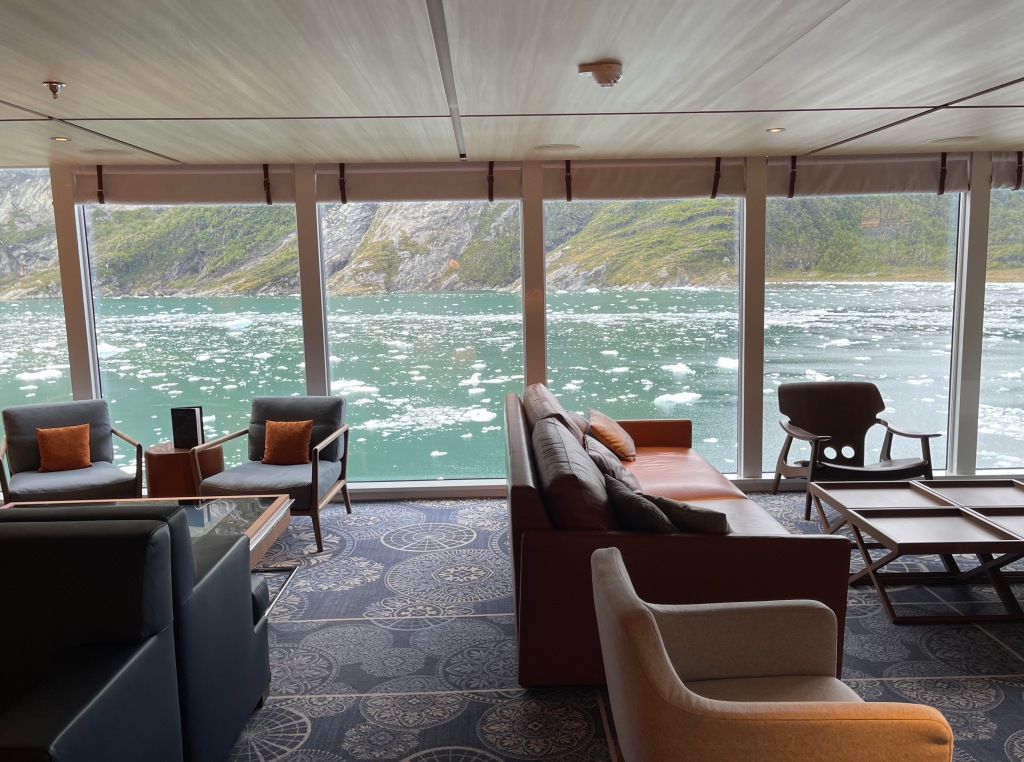
One of Viking’s sales pitches is “Sail the World in Comfort”. Here’s proof. This is the view of the fjords from Explorers Lounge on Deck 4 on the starboard side of the ship. This is a few steps from our stateroom. In the early mornings I would sit in the Lounge with John, another passenger going the full 65 days, talk and drink coffee and watch the sun come up. We made new friends on this trip. We always do.

In the fjords I found grandeur and serenity in being two giant steps away from civilization. It is why I love the Inner Passage on the way to Alaska — why I love the Arctic, the Antartica and the Northwest Passage through Canada — why I love Greenland — and why I especially love the Chilean fjords and love the movie “Local Hero” (shown recently on TCM movie channel after many years of being missing in action). It is a movie far ahead of its time. It was produced by Davina Belling and her husband in Scotland. The three of us worked hard to find a movie project we could develop together during my days in Hollywood in the early 1990s.
We spent several days in the fjords, then a day in Punta Arenas and then returned to the fjords for a few more days as we trekked further north along the west coast of South America.


